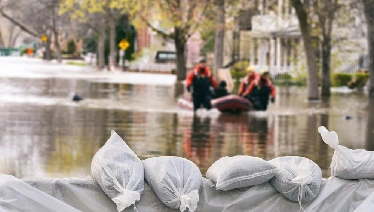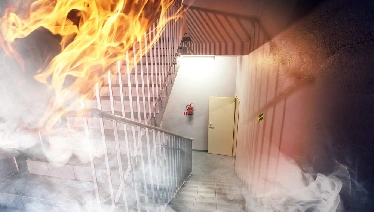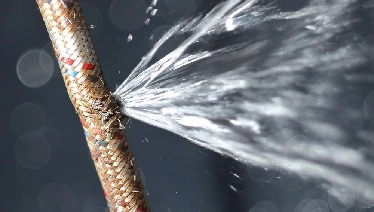Water is the most destructive substance in the indoor environment. Water causes damage many ways. It adversely affects materials by dissolving them or causing them to swell, warp, stain or corrode. Water also promotes and sustains the growth of destructive and potentially dangerous microorganisms. Water damage will get worse unless we do something about it.
As a water restoration professional, and as owner of Rainbow Restoration of the Southern Tier, we want you to understand and be comfortable with the restoration recommendations we make. Our recommendations are based on common sense, science and years of successful practical experience. However, as the customer you have the right to control aspects of the project, and will bear responsibility for problems that result from the refusal of our recommendations.
We Work for You, not the Insurance Company
Although your insurance company may have recommended our firm, we will be working for you, not your insurance company. If you do not agree with our opinions and suggestions, you have the right to obtain another opinion. You have the option to use a different service provider. We want to make matters as easy as possible for you. Our job is to be part of the solution.
Emergency Response
Under the terms and conditions of an insurance policy, the policyholder is obligated to take the necessary action to limit and to prevent further damage. Prompt action is necessary to prevent further damage. However, your insurance company may need to inspect before carpet and other furnishings are removed or disposed of. Your health and safety is more important to us than money. Sometimes the right choice is expensive. Porous materials contaminated with bacteria or fecal matter must be removed. If you decide otherwise be prepared to release the contractor from liability.
Common Misconceptions About Water Damage
"My carpet retailer says that water will destroy my carpet." Some carpet retailers are unfamiliar with current drying technology or have a conflict of interest. According to a recent study, wet carpet initially loses strength, but gets stronger after being wet for 48 hours, even to the point of exceeding the original dry strength. According to the Carpet and Rug Institute (CRI), an organization of carpet and fiber manufacturers, carpets exposed to clean water that are promptly and professionally dried, cleaned and restored will not experience any loss of strength or useable life span.
“My homebuilder says that wet drywall needs to be replaced.” Water is used both in the manufacturing of drywall, as well as during some installation processes. Drywall exposed to clean water, and promptly dried and professionally treated is routinely restored without loss of strength or structural integrity.
Salvaging Vs Replacement is Dependent Upon Variable Factors
Of course, there are limitations to what we can accomplish. Some water-damaged carpets and structural materials may not be salvageable. Salvaging these items is dependent upon many factors – the cleanliness of the water, response time and thoroughness of the response. The cleaner the water and the faster the response, the more likely the material can be restored. Other issues and factors may include the expense, feasibility or desirability of restoration versus replacement.
Water Purity Categories
Invasive water typically falls into three categories: clean, dirty and contaminated:
Category 1 water is referred to as “Clean Water”. Clean water originates from a source that does not pose substantial harm to humans. Examples of clean water sources may include, but are not necessarily limited to, broken water supply lines, tub or sink overflows with no contaminants, appliance malfunctions involving water supply lines, melting ice or snow, falling rainwater, broken toilet tanks and toilet bowls that do not contain contaminants or additives.
Category 2 is known as “Gray Water”. Gray water contains a significant level of contamination and has the potential to cause discomfort or sickness if consumed by or exposed to humans. Gray water carries microorganisms and nutrients for microorganisms. Examples of gray water sources may include, but are not necessarily limited to, discharge from dishwashers or washing machines, overflows from washing machines, overflows from toilet bowls with some urine (no feces), sump pump failures, seepage due to hydrostatic pressure, broken aquariums and punctured water beds.
Category 3 water is referred to as “Black Water”. Black water contains pathogenic agents and is grossly unsanitary. It presents a substantial risk of harm to humans. Black water includes sewage and other contaminated water sources entering or affecting the indoor environment. Category 2 water that is not removed promptly from the structure may be reclassified as category 3 water. Toilet backflows that originate from beyond the toilet trap is considered black water contamination, regardless of visible content or color.
Some water claims are easy to categorize while others are not. Small problems unrecognized or improperly dealt with can and do grow into big problems. The difference between a successful water restoration project and an unsuccessful one may be as simple as selecting the right contractor.
Inspection
The inspection phase of a water restoration project is extremely important. Water always seeks its own level. Water may collect and form hidden pockets of moisture inside lower wall cavities. This is further complicated when the source of water is above or overhead; this permits water to enter ceiling or upper wall cavities. Water damage professionals rely on diagnostic instruments to locate all the areas and surfaces which require drying and to monitor the drying process.
The Drying Process
The drying process consists of two components – evaporation and dehumidification. Air movement equipment is utilized to accelerate the rate of evaporation. Dehumidifiers remove this excess moisture from the air, building materials and personal property. Proper drying may involve making access openings into wall and ceiling cavities. If airborne particulates are a concern, the affected areas may be draped off with plastic or air filtration devices can be installed to remove particulates from the air. Room temperature also plays an important role in how fast we will be able to dry your structure. It also effects how efficiently our equipment performs. It is very important that we maintain certain room temperatures throughout the drying process.
Mold
Mold is a type of fungus. It occurs naturally in the environment. It spreads by means of microscopic airborne spores. Mold is found everywhere life can be supported. However, it requires certain conditions to grow. First and most importantly, mold growth requires moisture. By minimizing moisture, we can reduce or eliminate the risk of mold growth. All molds are not necessarily harmful, but certain types of mold are believed to have adverse health effects to susceptible people, such as allergic reactions, skin irritation, and respiratory problems. However, experts disagree about the level of mold exposure required to cause health problems.
Biocides
Biocides are sometimes used to kill or inhibit the growth of microorganisms like mold and bacteria. Although it is our company’s general policy to limit the use of Biocides, there are certain situations that merit their use. In addition, biocides might be used in losses that have gone unprocessed for a number of days.
Thank you for allowing our company to put our knowledge, skills and experience to work for you. If you have any questions, please contact us.



